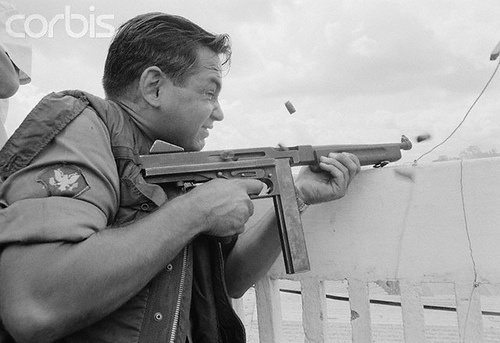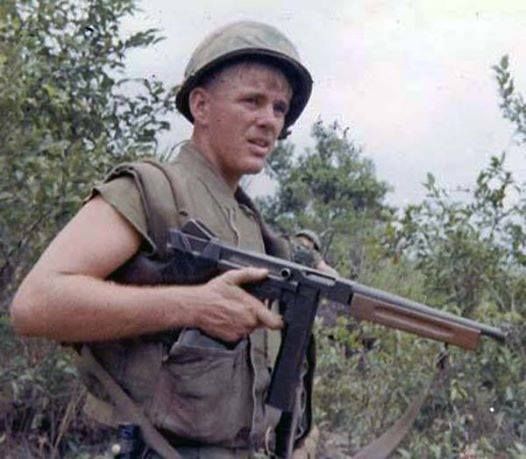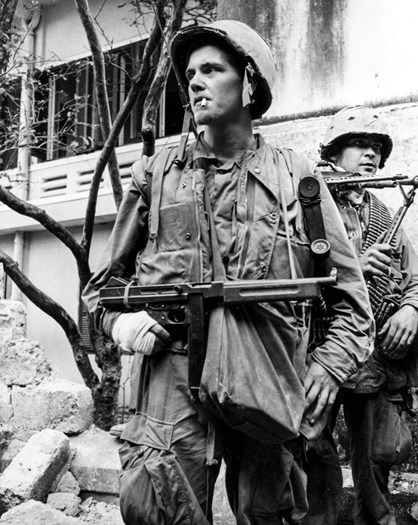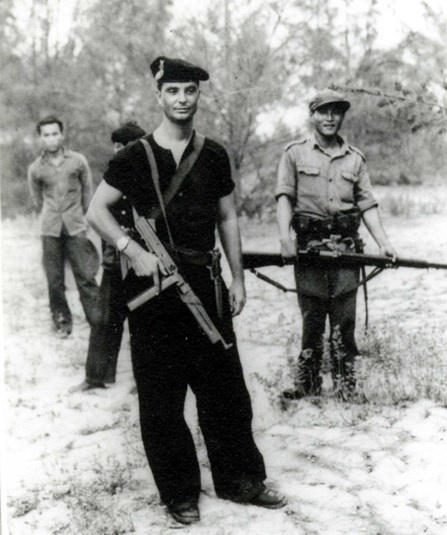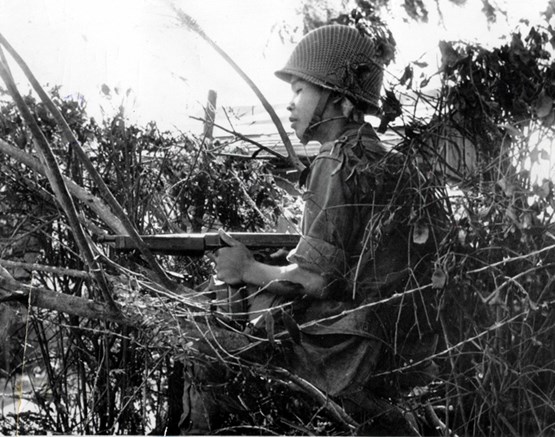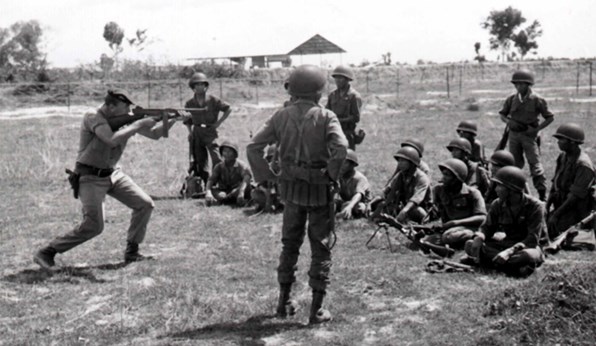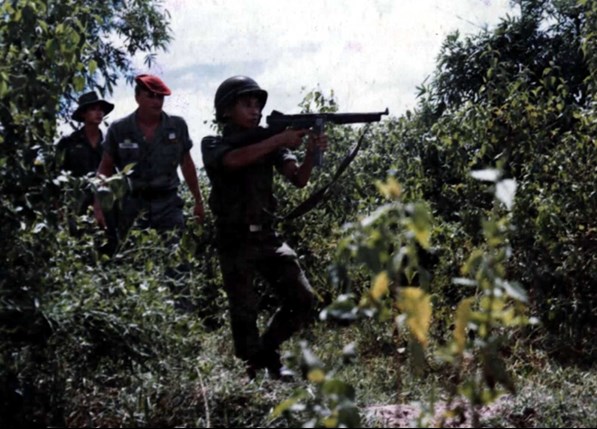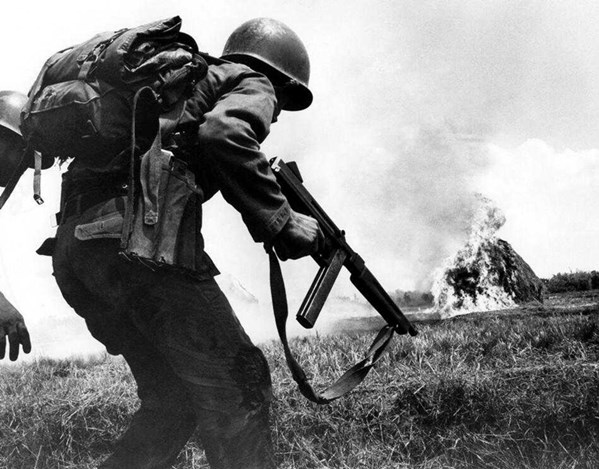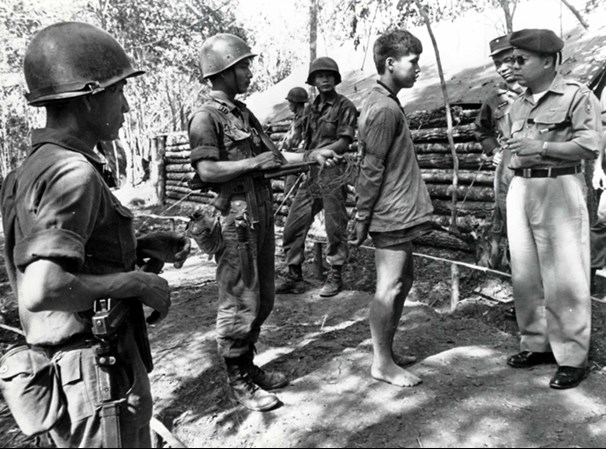M1A1 Thompson
| Factions | Weapon | Icon | Classes | Ammo |
|---|---|---|---|---|
 US |
 M1A1 Thompson |
 |
30 / 90 |
| Damage Base | Headshot × | Chest × | Stomach × | Leg × | Arm × | Reload Speed | |
|---|---|---|---|---|---|---|---|
| Partial | Empty | ||||||
| 38 | ×2.6 = 98.8 | ×1.4 = 53.2 | ×1.3 = 49.4 | ×0.8 = 30.4 | ×0.75 = 28.5 | 2.766 Seconds | 3.166 Seconds |
| Designation | Weapon Type | Fire Modes | Fire Rate | Bullet Spread ° | Range Modifier | Muzzle Velocity | Projectile weight | Weight |
|---|---|---|---|---|---|---|---|---|
| M1A1 | SMG | Auto+Semi | 700 RPM | 7.2° & 1.95° ADS | 0.85 | 285 m/s | 14.9 g (229.94 gr) | 4.9 kg (10.8 lbs) |
| Full name | Caliber | Place of Origin | Date | Manufacturer | Barrel Length | Total Length | Weapon Script Name |
|---|---|---|---|---|---|---|---|
| United States Submachine Gun, Cal. .45, M1A1 | .45ACP | USA | 1941 | Auto-Ordnance Company (originally) The Birmingham Small Arms Company Limited Colt Savage Arms RPB Industries |
10.52 in (267 mm) | 31.9 in (810 mm) | weapon_m1a1 |
The Thompson submachine gun, also known as the "Tommy gun," was invented by U.S. Army Brigadier General John T. Thompson in 1918. Although it missed World War I combat, it saw early use by the U.S. Marine Corps, the Postal Inspection Service, the Irish Republican Army, the Republic of China, and the FBI. The weapon became notorious during Prohibition as the favored weapon of organized crime syndicates. Widely adopted by U.S. and Allied forces during World War II, the Thompson's main models were the M1928, M1, and M1A1, with over 1.5 million units produced during the war.
HISTORY
Brigadier General John T. Thompson, of the U.S. Army's ordnance department, invented and developed the Thompson submachine gun to replace bolt-action rifles like the M1903 Springfield. He utilized John Bell Blish's 1915 patent for the Blish lock, leading to the foundation of the Auto-Ordnance Company in 1916 with Thomas F. Ryan's financial backing.
Developed mainly in Cleveland, Ohio, by designers Theodore H. Eickhoff, Oscar V. Payne, and George E. Goll, the Thompson submachine gun used a friction-delayed blowback action and was chambered in .45 ACP. Initially named the "Annihilator I," it was rebranded in 1919 as the "Thompson Submachine Gun" after World War I ended before prototypes could be deployed.
The first model, the Model of 1921, faced poor civilian sales due to its high price. The Thompson was later adopted by the U.S. military in 1938 and saw extensive use during World War II. Two main military models were produced: the M1928A1, which accommodated both box and drum magazines, and the simplified M1 and M1A1 models with box magazines only. Over 1.5 million units were produced during the war.
The Thompson was popular among Allied forces, particularly in specialized units like British and Canadian commandos, U.S. paratroopers, and Rangers. Despite its effectiveness in close combat, it was eventually replaced in many roles by lighter, more reliable weapons like the Sten and Owen submachine guns. The U.S. introduced the M3 and M3A1 submachine guns in 1943, but production delays meant the Thompson remained in service throughout the war.
During the Vietnam War, some South Vietnamese army units and defense militia were armed with Thompson submachine guns, and a few of these weapons were used by reconnaissance units, advisors, and other American troops. It was partially replaced by the MAC-10, albeit during Vietnam, the fully automatic fire provided by the M16 made the Thompson less effective than it previously had been. Still, not only did some U.S. soldiers have use of them in Vietnam, they encountered them as well. The Viet Cong liked the weapon and used both captured models as well as manufacturing their own copies in small jungle workshops.
SOURCE
SOURCE
-
A South Vietnamese soldier in the village of Tia My, armed with a Thompson sub-machine gun, March 1962.
-
LRRP with Thompson M1A1 modified with a CAR-15 stock.
-
The Thompson was used by Americans during the Vietnam War. This leatherneck of the 1st Marine Division carried a Thompson gun during the Tet Offensive, in the battle for Hue, February 1968.
-
The Thompson stayed in service aboard U.S. Navy vessels for ship-board defense and for use by shore parties. This sailor carries an M1A1 near Quang Tin during 1964.
-
The Army of the Republic of Vietnam (ARVN) was a significant user of the Thompson in the first half of the 1960s. Note the steel reinforcing band on the front grip of this soldier’s M1A1.
-
A U.S. Special Forces advisor providing ARVN troops with instruction on using the Thompson in October 1962.
-
This ARVN Ranger was training with an M1A1 Thompson during October 1962.
-
an ARVN trooper with a M1A1 Thompson during an operation against the Viet Cong during 1965.
-
South Vietnamese troops interrogate a suspected Viet Cong during 1962. Note that they have removed the buttstocks from their M1A1 Thompson guns to save weight, a common practice among South Vietnamese troops.






